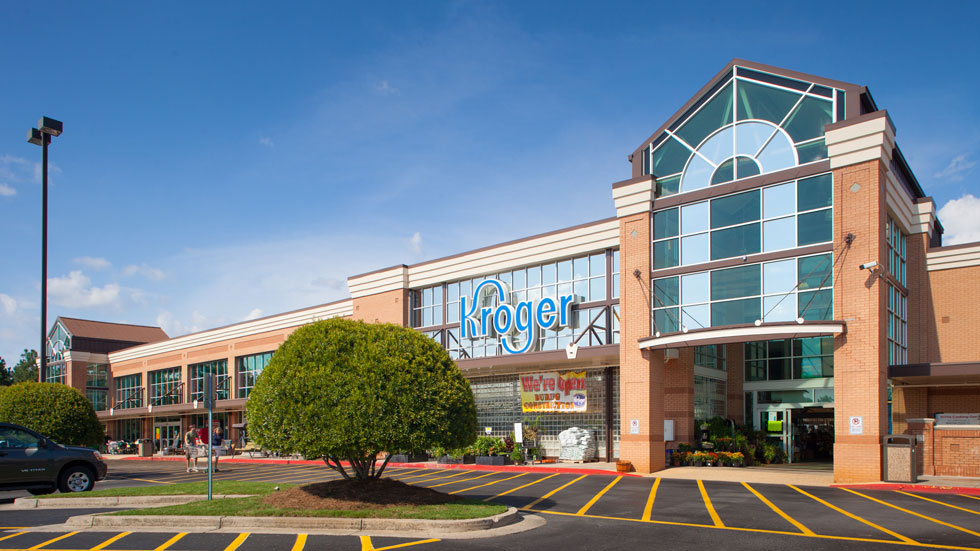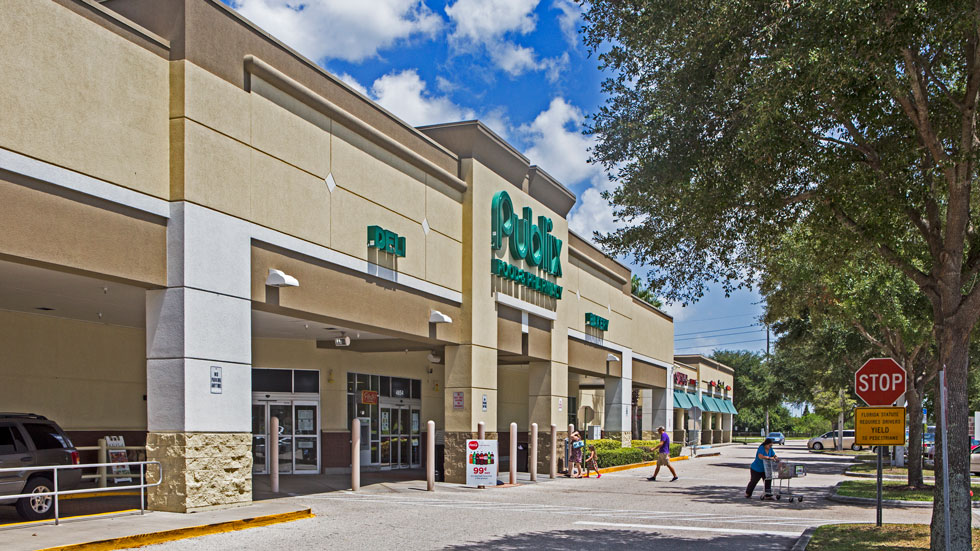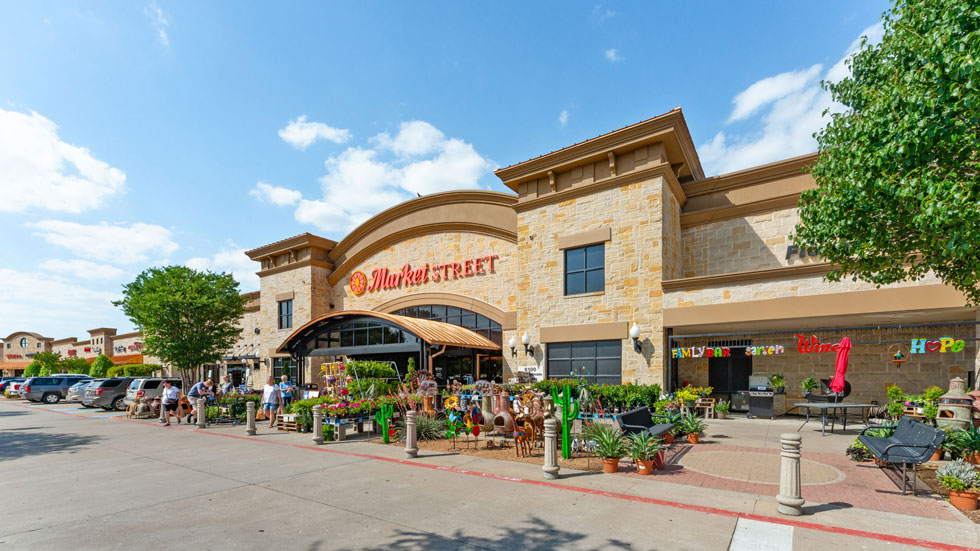With a successful public offering completed this summer and a strategy that focuses on opportunity in the grocery-anchored retail sector, Phillips Edison & Company, Inc. (Nasdaq: PECO) is continuing to realize the goals it set three decades ago.
Shortly after its launch in 1991, PECO acquired Nordan Shopping Center in Danville, Virginia, a move that would be the catalyst for the company’s strategy over the next 30 years.
“From the very beginning, we started building a culture around being the best at maximizing the value of grocery-anchored shopping centers,” says Jeff Edison, chairman, CEO, and co-founder of PECO. “The driver behind that was having the ability to totally understand how that property operated at a local level.”
Today, PECO owns and operates a portfolio of 272 wholly-owned centers comprising approximately 30.8 million square feet across 31 states, with annual net operating income (NOI) of about $350 million. “We have basically doubled the size of our company every three years,” Edison says. “It’s been an active growth business for a long period of time.”
The company has taken a distinct path in pursuit of that growth. PECO once acquired a major portfolio for upwards of $500 million but learned in the process that it wasn’t the way the REIT wanted to grow its business. “We’re not ‘big deal’ guys,” Edison says. “We’ve assembled the portfolio almost exclusively by buying individual assets oneat a time.”
Recent deals include the February acquisition of West Village Center, a 142,724-square-foot shopping center in Chanhassen, Minnesota, its 11th shopping center in the Minneapolis-St. Paul metropolitan area; and the May purchase of Hickory Creek Plaza, a 36,732-square-foot, Kroger-anchored shopping center in Denton, Texas.
Evolving Model
PECO’s growth was initially funded by private investment funds, but as time went on, larger funds involving major institutional investors wee raised and PECO eventually sponsored two public non-listed REITs: Phillips Edison Grocery Center REIT I, which launched in 2010, and Phillips Edison Grocery Center REIT II, which launched in 2014.
Combined, these public non-listed REITs raised $3 billion in equity. In 2017, Phillips Edison Grocery Center REIT I acquired the real estate assets and asset management business of Phillips Edison Limited Partnership, creating an internally managed REIT.
In 2018, REIT I and II merged, creating a $6.3 billion REIT focused exclusively on grocery-anchored shopping centers. PECO’s diversified portfolio of well-occupied neighborhood shopping centers features a mix of national and regional retailers selling necessity-based goods and services in fundamentally strong markets throughout the United States.
When he thinks about the evolution of the company, Edison points to three pieces that he believes have helped in its growth: how the team has evolved; how the portfolio has been developed; and, the savvy capital plan enacted.
One of the things PECO did early on was award stock to everyone who was an associate with the company for more than a year, which has allowed staff to think like owners.
“Developing that team and constantly trying to improve it has been a driver for us,” Edison says. “We’ve also continuously tried to build a portfolio where our grocery and our small stores were really successful. Finding the right formula for that has been a constant process for PECO and a big part of our development.”
As for developing capital, PECO always believed that to be successful, the company needed to have the lowest cost of capital and to attract capital from a wide variety of sources. For instance, that first center in Virginia utilized funding from friends and family.
“We eventually got into the high net worth fund business,” Edison explains. “As capital growth needs expanded, we raised two institutional funds. We have consistently focused on having the right capital for what we were doing, which was buying, redeveloping, and maximizing the value of grocery-anchored shopping centers.”
Going Public
This past July, PECO successfully executed its initial public offering (IPO) selling 19,550,000 shares of common stock, including the full execution of the over-allotment, and raised $547 million in gross proceeds.
“We’re a company that’s grown consistently over a long period of time, so we wanted access to all sources of capital. Three years ago, we started on the process of getting our portfolio and our team ready for an IPO,” Edison says. There were a number of mergers that went on to get that done, as well as the sale of 40 assets that were not core to PECO’s strategy.
That put PECO in the position to go public, and when it saw an opportunity coming out of the pandemic thanks to the company’s strong performance throughout that period, the timing just felt right, Edison says.
Indeed, foot traffic at PECO centers during June 2021 totaled 102% of average monthly levels during 2019, and second quarter same-center NOI increased 4.5% compared to the second quarter of 2019.
Todd Thomas, managing director and analyst at KeyBanc Capital Markets Inc., notes the PECO team has executed well in the short time since the IPO.
“PECO reported solid second quarter results and the team is proving they have a strong platform capable of competing within the shopping center REIT subsector,” he says. “The company’s strategy is clean, simple, and easy to digest, which the institutional markets appreciate.” Thomas adds that the company’s healthy balance sheet should provide ample capacity for increased investments in the years ahead.
“The appetite for grocery-anchored retail properties historically has been healthy. There has been an increase in demand more recently given the performance of the asset class during the pandemic and the ongoing recovery that appears to be materializing,” Thomas says.
Necessity-based Focus
Early on in the process of building the business, co-founders Edison and Mike Phillips realized that they wanted to serve the average American consumer and help provide necessity goods in the best locations.
“Our philosophy from the beginning and all the way through, was to bring necessity goods to the average American. We make money where our grocers and our small stores make money. If we do that, we will be successful for all our partners.”
PECO’s focus is not geography-based, but to be in markets where grocers and small stores can be successful, so properties are located everywhere from Miami to Phoenix to Cincinnati to Chicago.
“There are macro factors that affect the trade area, and we are focused on that, but it’s mostly about the immediate trade area where we compete,” Edison says. “I like to say we compete at the corner of Indian School Road and North 28th Street, not in the greater Phoenix area. We focus on a very specific location—the three mile ring immediately around the center.”
PECO has leaned on technology to help it improve on those location decisions, including two proprietary algorithms that it uses to assess every property. One algorithm PECO calls its Power Score and the other its gold score, and both have to be met in order for a property to be considered.
Because PECO competes at the property level, its competition is the other grocery-anchored shopping centers within a three-mile radius of its centers.
“You start competing by having the number one or two grocer in that market, which is going to drive the most foot traffic, and then putting together all the other pieces of the location of the physical plant and the access and what makes a good experience for the customer,” Edison says. “We’re not thinking of it on a macro level, because we win at the micro level. We are focused on the individual property and individual market—on the corner of Main St. and Main St.”
Meanwhile, investors are attracted to PECO because of its differentiated strategy.
“We have a very aligned management team and I think our team owns more of the company than any other REIT management team in our sector. We think like owners,” Edison says. “We’ve been doing this for 30 years, so we’ve seen this strategy work through the cycles. As an investor, that gives you a strong level of confidence.”
Identifying Growth
Over the next three years, Edison anticipates adding $1 billion of new assets to the company, all individual grocery-anchored shopping centers with the number one or number two grocer in any given area.
“There certainly is a greater spotlight on the grocery-anchored shopping center business today,” Edison says. “When we look at our business, we see a ton of opportunity for growth. We’re going to do it the way we have and try and continue to buy the right assets.”
Edison says PECO has identified 5,800 shopping centers across the country that it would like to own and consolidate into the company. “After the IPO, we have a balance sheet that is among the best in our sector in terms of leverage ratio, giving us significant room to grow.”


